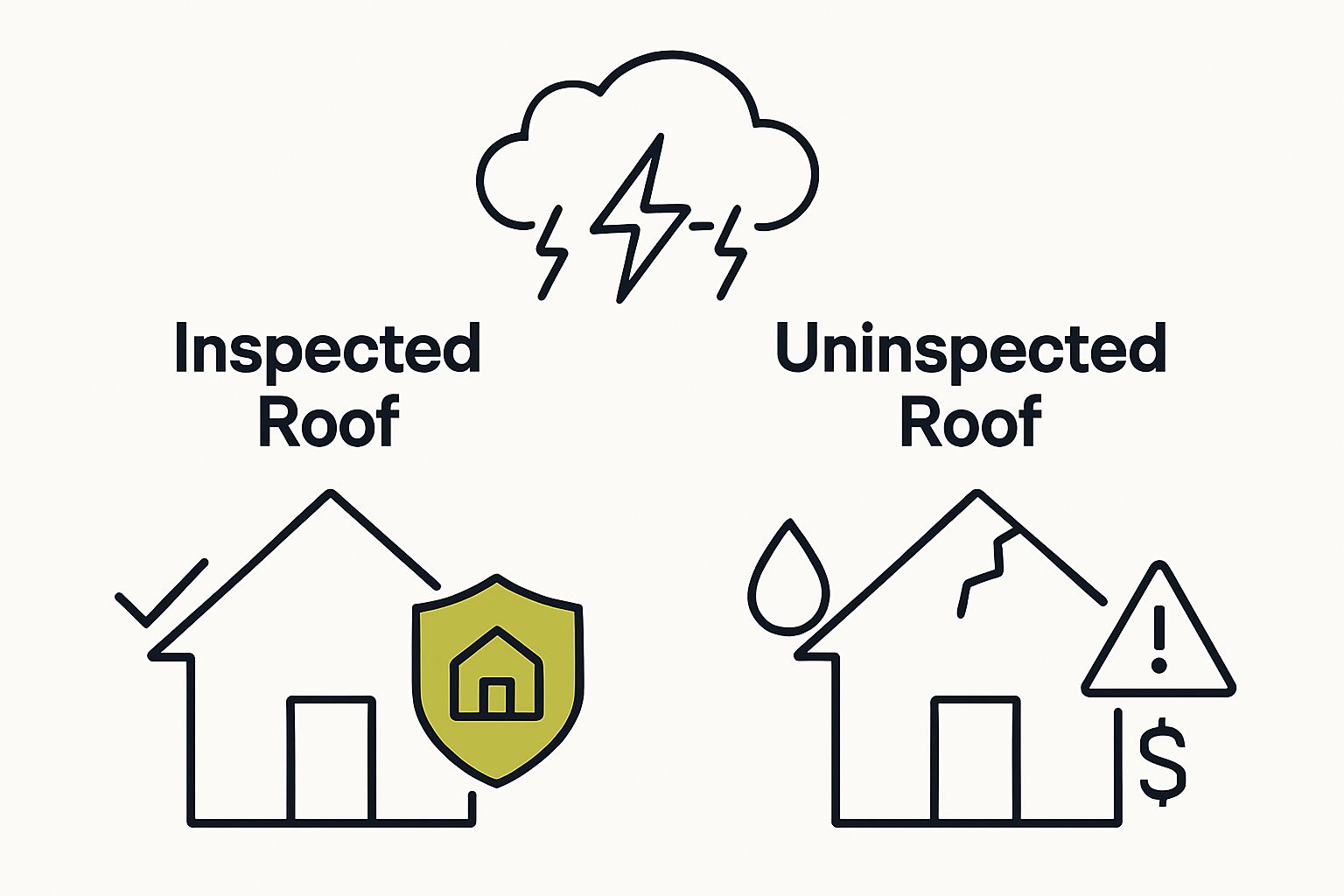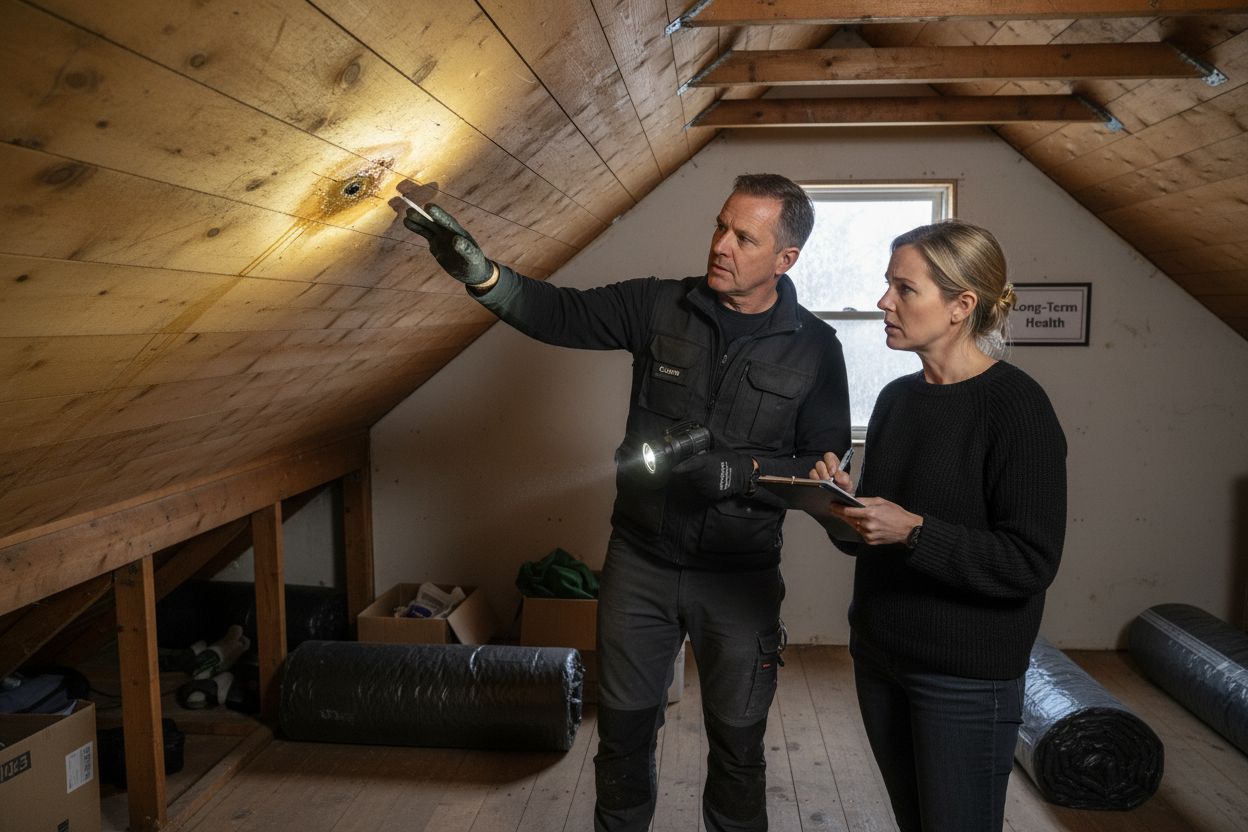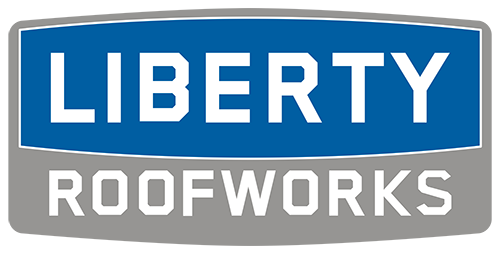Storms can leave your roof looking untouched, but that does not mean you are in the clear. Even after mild weather events, experts report that microscopic roof damages often go unnoticed but can triple repair costs if ignored. Most people believe a quick glance is enough, but real risk lies in what you cannot see until it is too late.
Table of Contents
- The Importance Of Roof Inspections After Storms
- Common Storm-Induced Roof Damages To Watch For
- Understanding The Risks Of Ignoring Roof Inspections
- The Role Of Professional Roof Inspectors
- How Inspections Contribute To Long-Term Roof Health
Quick Summary
| Takeaway | Explanation |
|---|---|
| Regular inspections prevent major problems. | Routine roof assessments identify minor issues before they escalate, saving on future repair costs. |
| Professional inspectors reveal hidden damage. | Experts use advanced techniques to detect microscopic damages that homeowners might miss, ensuring thorough assessments. |
| Ignoring inspections can cost you financially. | Unaddressed roof issues can lead to larger repair expenses, insurance complications, and decreased property value. |
| Timely repairs protect your home’s value. | Prompt action on detected damages helps maintain the structural integrity of the roof and overall home. |
| Know your roof’s condition for better maintenance. | Understanding the state of your roof allows for informed planning regarding maintenance needs and budgeting. |
The Importance of Roof Inspections After Storms
When severe weather strikes, your roof becomes the first line of defense against potentially devastating damage. Storm aftermath can introduce subtle yet critical vulnerabilities that might compromise your home’s structural integrity and safety. The National Weather Service emphasizes the critical nature of post-storm roof assessments to prevent long-term structural complications.
Understanding Storm Impact on Roofing Systems
Storms can create numerous hidden challenges that are not immediately visible to the untrained eye. Wind, hail, heavy rain, and flying debris can cause microscopic damages that gradually weaken your roofing system. These damages might include:
- Cracked or displaced shingles
- Compromised roof membrane
- Weakened structural connections
- Potential water infiltration points
What seems like minor damage today could transform into significant repair expenses if left unaddressed. Professional roof inspections help identify these subtle indicators before they escalate into major structural problems.
The Financial and Safety Implications
Beyond immediate visual damage, undetected roof issues can lead to substantial financial risks. Water intrusion can cause:
- Mold development
- Wood rot
- Electrical system damage
- Compromised insulation
Timely inspections serve as a proactive measure to protect your property’s value and inhabitants’ safety. By understanding storm damage repair essentials, homeowners can make informed decisions about their roof’s condition and potential restoration needs.
Professional roof inspectors utilize specialized tools and expertise to detect damages that might escape an untrained observer.
Their comprehensive assessments provide a detailed understanding of your roof’s post-storm condition, enabling targeted and cost-effective repair strategies.
Common Storm-Induced Roof Damages to Watch For
Storm damage can manifest in numerous subtle and complex ways, transforming your roof from a protective shield into a potential vulnerability. The Insurance Institute for Business & Home Safety emphasizes that not all storm damage is immediately visible, making professional assessment crucial.
Types of Wind and Hail Damage
Wind and hail represent two primary sources of roof damage during severe weather events. High-velocity winds can create significant structural challenges by:
- Lifting and displacing shingles
- Creating stress points at roof edges
- Generating uplift pressures that weaken roof connections
- Introducing potential water penetration zones
Hail damage, while less obvious, can cause equally concerning complications. Hailstones create micro-fractures and granule loss on roofing materials that compromise long-term roof integrity. These microscopic impacts gradually reduce your roof’s protective capabilities.
Water and Debris Impact Considerations
Beyond direct wind and hail damage, storms introduce additional risks through water infiltration and debris impact. Fallen branches, flying objects, and prolonged water exposure can:
- Create puncture points in roofing materials
- Accelerate material degradation
- Generate hidden moisture pockets
- Promote potential mold and rot development
Understanding these damage mechanisms is crucial for recognizing storm damage early. Professional roof inspections provide comprehensive assessments that identify these nuanced damage patterns, enabling homeowners to take proactive maintenance steps before minor issues escalate into significant structural problems.
The table below outlines the most common types of storm-induced roof damages and the associated risks for each kind, providing a clear comparison to enhance your understanding.
| Type of Damage | Description | Potential Risks |
|---|---|---|
| Wind Damage | Lifting, displacing, or stressing shingles and roof edges | Exposed roof layers, leaks |
| Hail Damage | Micro-fractures, granule loss from roofing materials | Reduced durability, faster aging |
| Water Infiltration | Moisture entering through punctures or weak points | Mold, wood rot, insulation damage |
| Debris Impact | Punctures or dents from fallen branches, flying debris | Material puncture, hidden moisture |
| Structural Weakening | Weakened connections and support structures | Elevated risk of roof failure |
Understanding the Risks of Ignoring Roof Inspections
Ignoring post-storm roof inspections might seem like a cost-saving measure, but it can lead to devastating financial and structural consequences. The National Roofing Contractors Association warns that undetected roof damage can exponentially increase repair costs over time.
Structural Degradation and Long-Term Damage
When roof damages are left unaddressed, they create a cascading effect of deterioration. Minor issues like small cracks or loose shingles can quickly transform into significant structural problems. These unnoticed vulnerabilities allow:

- Water to penetrate underlying roof layers
- Gradual wood rot and structural weakening
- Increased risk of complete roof system failure
- Compromised home insulation performance
Each unrepaired damage acts as an entry point for moisture, which can rapidly accelerate the roof’s deterioration process. Moisture intrusion becomes a silent destroyer, compromising your home’s fundamental protective barrier.
Financial and Insurance Implications
Neglecting roof inspections carries substantial financial risks. Most homeowners insurance policies require prompt damage reporting and mitigation. Delayed inspections can potentially:
- Void insurance coverage for storm-related damages
- Increase out-of-pocket repair expenses
- Reduce overall property value
- Create potential safety hazards
By understanding preventative roofing maintenance, homeowners can proactively protect their investment and prevent minor issues from escalating into costly, comprehensive roof replacements. Professional roof inspections serve as a critical intervention strategy, identifying and addressing potential problems before they become significant financial burdens.
The Role of Professional Roof Inspectors
Professional roof inspectors represent a critical line of defense in protecting your property from hidden storm-related damages. The Insurance Institute for Business & Home Safety highlights that these specialists possess specialized training and equipment to detect vulnerabilities invisible to untrained eyes.
Advanced Detection and Assessment Techniques
Roof inspectors employ sophisticated methodologies that go far beyond simple visual examination. Their comprehensive approach involves:
- Utilizing thermal imaging cameras
- Conducting moisture mapping
- Performing detailed structural assessments
- Analyzing potential water infiltration points
Advanced technology enables these professionals to identify microscopic damages that could compromise your roof’s long-term integrity. These nuanced assessments help homeowners understand the precise condition of their roofing system, transforming potential future catastrophic failures into manageable maintenance strategies.
Documentation and Reporting Expertise
Beyond physical inspection, professional roof inspectors provide critical documentation that serves multiple purposes. Their detailed reports can:
- Support insurance claims
- Provide precise repair recommendations
- Create comprehensive maintenance records
- Establish baseline roof condition assessments
By understanding the role of roofing contractors, homeowners gain insights into the intricate process of maintaining their most important structural asset. Professional roof inspectors bridge the gap between potential unseen damage and proactive home maintenance, ensuring your property remains protected against storm-related deterioration.
This table compares key roles and benefits of professional roof inspectors in the post-storm assessment process, helping homeowners understand what distinguishes expert evaluations from DIY checks.
| Inspector Role | Tools/Techniques Used | Homeowner Benefit |
|---|---|---|
| Advanced Detection | Thermal imaging, moisture mapping | Finds hidden or microscopic damage |
| Structural Assessment | Detail-oriented inspections | Identifies risks before they worsen |
| Documentation & Reporting | Written reports, photo evidence | Supports insurance and repair claims |
| Maintenance Planning | Baseline roof condition analysis | Informs long-term roof care strategy |
How Inspections Contribute to Long-Term Roof Health
Regular roof inspections serve as a preventive healthcare strategy for your home’s most critical protective layer. The National Park Service emphasizes that systematic evaluations are fundamental to preserving roofing materials and extending their functional lifespan.
Proactive Damage Prevention
Routine inspections function as an early warning system, identifying potential vulnerabilities before they escalate into significant structural problems. These assessments help homeowners:
- Detect microscopic damage early
- Prevent progressive material degradation
- Mitigate potential water infiltration risks
- Maintain overall roof structural integrity
Early intervention becomes the cornerstone of long-term roof preservation. By addressing minor issues promptly, homeowners can avoid expensive comprehensive repairs and potential structural compromises that emerge from prolonged neglect.
Comprehensive Maintenance Strategy
Inspections provide more than immediate damage assessment. They create a holistic understanding of your roof’s evolving condition, enabling strategic maintenance planning. Professional evaluations offer insights that allow homeowners to:
- Predict potential future repair needs
- Budget for maintenance expenses
- Understand roof aging patterns
- Track cumulative environmental impacts
How to keep your roof maintained involves understanding these nuanced assessment strategies. Regular inspections transform roof maintenance from a reactive process to a proactive, strategic investment in your property’s long-term protection and value.

Protect Your Home with a Professional Storm Damage Roof Inspection
After a severe storm, hidden damage can quietly put your home at risk. The article above highlights the costly and dangerous impact of missed cracks, water infiltration, and weakened shingles—issues that can escalate fast if you skip a thorough inspection. At Liberty Roofworks, we understand the anxiety that comes from worrying about unseen roof problems. Our certified team uses advanced tools to uncover problems early, so you avoid heavy repair bills and keep your loved ones safe. We believe a strong roof starts with a careful inspection and targeted repairs.
Now is the time to take action. Do not wait for small issues to turn into big headaches. Let our experts deliver peace of mind with reliable storm damage repair solutions and ongoing maintenance support. Visit Liberty Roofworks and schedule your inspection today to safeguard your home before the next storm hits.
Frequently Asked Questions
Why is a roof inspection necessary after a storm?
Conducting a roof inspection after a storm is essential to identify hidden damages that can worsen over time. Schedule a thorough check-up within a few days to catch any issues early and prevent costly repairs down the line.
What types of damage should I look for during a roof inspection after a storm?
During a roof inspection, look for cracked or missing shingles, signs of water infiltration, and any visible structural weaknesses. Take the time to document these issues so you can address them promptly.
How can professional roof inspectors help with storm damage assessments?
Professional roof inspectors use specialized tools and techniques to identify subtle damages that might not be visible to the untrained eye. Hire a qualified inspector to ensure a comprehensive assessment and receive clear recommendations for necessary repairs.
What are the financial risks of ignoring roof inspections after a storm?
Ignoring roof inspections can lead to severe financial burdens due to worsening damage, which may not be covered by insurance if reported late. To minimize risks, schedule an inspection soon after the storm to document damage and potentially save thousands on future repair costs.
How frequently should I have my roof inspected after major storms?
It’s advisable to have your roof inspected after every major storm, especially if strong winds, hail, or heavy rainfall occurred. Aim for inspections within 30 days after the storm to ensure any damage is addressed in a timely manner.
What should I do if I discover damage during my roof inspection?
If you discover damage, take immediate action by contacting a professional roofing contractor for guidance on the necessary repairs. Promptly addressing issues can prevent further damage and maintain your roof’s integrity.
Recommended
- Roof Inspections: What Happens During an Inspection for Storm Damage?
- Understanding Why Storm Damage Repairs Are Essential – Liberty Roofworks
- What is Storm Damage Repair? Understanding Its Importance – Liberty Roofworks
- What Is Storm Damage? Understanding Its Impact on Homes – Liberty Roofworks
- 2025 Gulf Coast Hurricane Preparedness Guide: Tips to Protect Your Home, Family & Property
